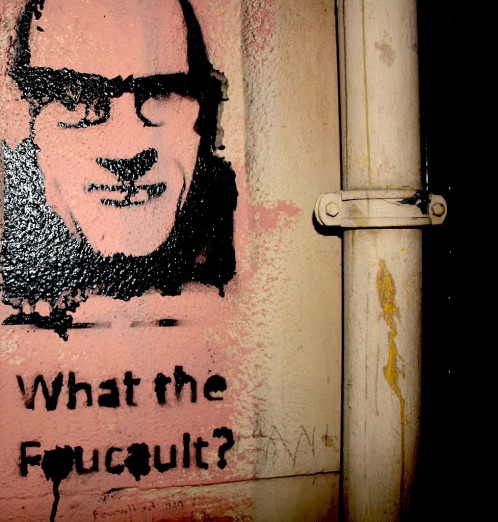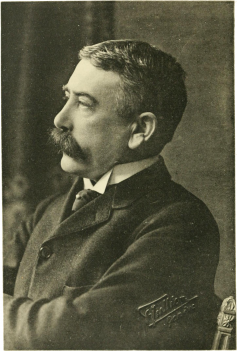08102013
WHAT IS AN AUTHOR?
“The Author is a certain functional principle by which, in our culture, one limits, excludes and chooses: (…) The author is therefore the ideological figure by which one marks the manner in which we fear the proliferation of meaning.”
This is a quote from the influential lecture on literary theory given by Michel Foucault, the French philosopher, sociologist and historian.
The work considers the relationship between author, text, and reader.
An Individual
is a person who has their own mind, views and opinions.
A Creator
is a person who brings to life an idea.

So what truly is an author?
That question has been an area that cannot be properly defined for half a century. Even the meaning of the word itself has begun to morph as time progresses. The earliest definitions had hardly anything to do with writing in the first place. In fact the most inclusive is a "person who originates or gives clearly index authoritarian — even patriarchal — connotations: "father of all life," "any inventor, constructor or founder," "one who begets," and a "director, commander, or ruler."
"Authorship may suggest new approaches to the issue of the design process in a profession traditionally associated more with the communication rather than the origination of the messages. But theories of authorship also serve as legitimizing strategies, and authorial aspirations may end up reinforcing certain conservative notions of design production and subjectivity -ideas that run counter to recent critical attempts to overthrow the perception of design as based on individual brilliance. The implications of such a re-definition deserves careful scrutiny. What does it really mean to call for a graphic designer to be an author?
In an article in Emigre, author Anne Burdick proposed that "designers must consider themselves authors, not facilitators. This shift in perspective implies responsibility, voice, action... With voice comes a more personal connection and opportunity to explore individual options."
POST- STRUCTUALISM
Post structuralism is an extension or evolution of an earlier movement called Structuralism.
Literary critics often trace Structuralism beginnings to the works of the Swiss linguist, Ferdinand de Saussure. He divided a word into two parts, the sound of the word (the signifier), and the concept (the signified), which union is called the sign.


Structuralism was a literary movement that put understanding how lauguage works as a system as their primary concern. Struturalism would ask the following question. How does language function as a kind of meaning machine? They then look at it's form. Focusing on the form or structure of the literary work, and the particular use of language in the work, would allow structuralists to think of language as a kind of science.
Post-structuralism, on the other hand, has a movement that is less singularly defined as strucuralism. Other literary theories that fall under this category, for example include “gender theory” and “reader-response” theories. These theories recognize the notion that meaning does not exist outside of the text and that meaning is not fixed but rather contingent and unstable. Poststructuralism evolved alongside Jacques Derrida’s theory of “deconstruction,” which emphasized this concept of unstable, unfixed meaning as it functioned in language. Post-structuralism recognizes this lack of fixed or inherent meaning and acknowledges the need for language to acquire meaning.
One can gain the status of called him/herself an author after a creation. And they will have a voice to put forward their view and opinions on their creations.
THE MODERNIST
The term Modernism describes an art movement. This movement is a set of cultural tendencies, arising from the Western society in the late 19th and early 20th centuries. The development of modern industrial societies and rapid growth of cities, and then followed by World War one helped shape Modernism. This movement also rejects Enlightenment, and reject religious beliefs.
People define Modernism as the power of human beings to create, improve and reshape their environment with the aid of practical experimentation, scientific knowledge, or technology. From this perspective, Modernism encouraged the re-examination of every aspect of existence, from commerce to philosophy, with the goal of finding that which was 'holding back' progress, and replacing it with new ways of reaching the same end. Others focus on Modernism as an aesthetic introspection.
16102013
THE MEDIUM IS THE MASSAGE.
The Medium is the Massage is a book created by media analyst Marshall McLuhan and graphic designer Quentin Fiore, and coordinated by Jerome Agel. It was published by Bantam books in 1967 and became a bestseller with a cult following.
The book itself is 160 pages in length and composed in an experimental, collage style with text superimposed on visual elements and vice versa. Some pages are printed backwards and are meant to be read in a mirror (see Mirror writing). Some are intentionally left blank. Most contain photographs and images both modern and historic, juxtaposed in startling ways.
It is stated that print is:
1. Static
2. Fixed
3. Linear
4. has a Unidirectional Communication
Where as digital work is:
1. Mallaeble
2. Unfixed
3. Non-Linear
4. Forever Changing
AUGMENTED REALITY
It is clear to see that as we are paving a huge future for all sorts of new technology to come, print media has started to become a dying breed.
Letters have been replaced with emails, and now text messaging as well as social networking online. TV Programs have been replaced with online streaming, and illegal torrenting. Newspapers have been replaced with phone applications that allow you to access news at an even faster rate. Where it would have once taken us a day to find out that Nelson Mandela had passed away, now we will know instantly because of the fast rate in which media works.
Substitutions of print media will continue to happen, and we as users need to find ways to keep up with the technology.
With this, comes the newly developed, and still on-going research into augmented reality.
AUGMENTED REALITY
Augmented reality is a live view of the physical world environments whose elements have been supplemented by computer-generated sensory input such as sound, video, graphics or GPS data. In other words, the physical view of the real world has been augmented and modified by a computer. As a result of this, the technology enhances the user's perception of reality.
In the image above, we see the view of a man through augmented reality. There are three different concepts taken into consideration. Firstly, using a phone, and then using a pair of glasses, and then using wireless contact lenses.
As we can see clearly in his view are names of places such as restaurants with ratings, a GPS system which directs his way, nearest subway stops and bus stops for transportation uses, a car locator, as well as some history.